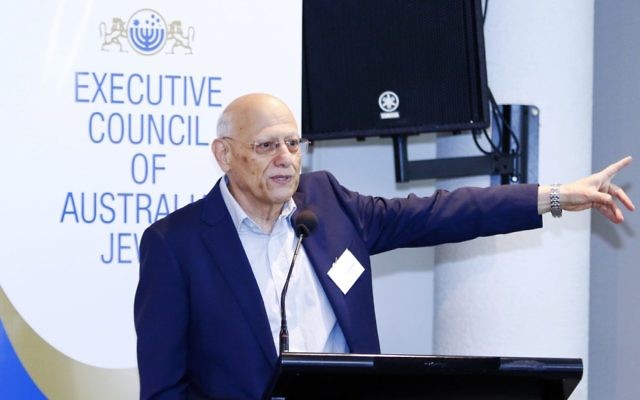Figuring out the shortfall in the Census
WITH overall religious affiliation in Australia appearing to decline in the latest Census, a demographics expert has identified a lull in Jewish immigration waves and anomalies in the Census methodology as the factors behind a result that shows some 6000 fewer people identifying as Jewish in 2016 than in 2011.
WITH overall religious affiliation in Australia appearing to decline in the latest Census, a demographics expert has identified a lull in Jewish immigration waves and anomalies in the Census methodology as the factors behind a result that shows some 6000 fewer people identifying as Jewish in 2016 than in 2011.
The estimated Jewish population, according to the 2016 Census, is 116,600. By comparison, the rise in Australia’s Muslim population since the 2011 Census is greater than the total Jewish population.
Presenting to the Executive Council of Australian Jewry (ECAJ)’s conference on Sunday, Professor Andrew Markus, director of the Australian Centre for Jewish Civilisation at Monash University, said previous censuses had reflected waves of Jewish arrivals from the former Soviet Union and from South Africa.
But the way that religious identification was framed in the 2016 Census is also a factor in the reported decline, he argued. He said that in the religious preference section, the “no religion” question was moved from the bottom to the top of the list. The Australian Bureau of Statistics (ABS) was probably trying to make it easier to fill out the form by placing the questions for which it anticipated large responses at the top, he said. However, by altering the order of the questions, the ABS “broke the series”, making comparisons with previous censuses less accurate.
“The way they did this, in my view, was very unprofessional,” said Markus. “You break a series when you’ve been asking a question and you ask a different question and the data is no longer directly comparable.”
Markus said the ABS “could have sampled, so they would understand the exact impact of that change”, that is, use the old order of questions in some areas to measure the impact of the new order of questions.
As it was, the change had “a huge impact”, he said. In Glen Eira, which has the largest Jewish population in Australia, those who ticked “no religion” leaped from 30,000 to almost 45,000. Markus said that spike of nearly 50 per cent was difficult to accept as accurate.
“Normally what you get with large populations is incremental change, you don’t get revolutionary change,” he said.
Markus said the extent to which Jews identified their religion will be examined in detail in Gen17, the Jewish community’s population survey. A preliminary report is due out next month.
PETER KOHN


comments